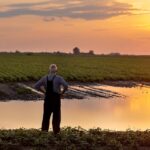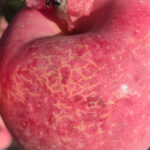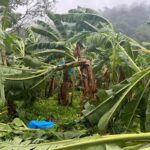Agronometrics in Charts: Record-breaking summer heat waves threaten US agriculture and consumer prices

In this installment of the ‘Agronometrics In Charts’ series, we analyze the impact of summer heat waves on agriculture. Each week the series looks at a different horticultural commodity, focusing on a specific origin or topic visualizing the market factors that are driving change.
As inflation begins to cool down from its four-decade high, the US faces another formidable challenge: a record-breaking summer heatwave. The soaring temperatures have not only set new records globally but also introduced unforeseen economic impacts. Beyond rising electricity bills, consumers are likely to face increasing costs for fruits and vegetables as extreme heat strains agricultural production.
While the Consumer Price Index (CPI) showed a 1% decrease in fruit and vegetable prices in June, this trend may soon reverse. Farmers across the country are experiencing significant challenges as they struggle to maintain crop yields amidst relentless heat waves.
Tom Avinelis, a veteran organic farmer operating in Fresno, California, and the Willamette Valley in Oregon, has witnessed firsthand the toll that extreme heat takes on crops. This summer’s near-record temperatures of over 100 degrees have led to a higher-than-usual percentage of shriveled fruit, reducing the amount of harvestable produce.
“The impact on our revenue potential is substantial,” Avinelis explains. His farms, managed by Homegrown Organic Farms, supply produce nationwide to stores like Whole Foods, Trader Joe’s, Costco, and Safeway. Although consumers may not see an immediate spike in prices for seasonal fruits like blueberries due to pre-existing contracts with retailers, the long-term outlook is less optimistic.
“As these heat events become more frequent, production will be increasingly challenged, altering the supply and demand dynamics,” he warns. The financial strain on farmers like Avinelis extends beyond the immediate loss of yield. The adaptation costs to mitigate the effects of extreme heat—such as upgrading irrigation systems—are mounting. Organic farmers are at a disadvantage compared to their nonorganic counterparts, who can use protective sprays to shield crops from intense sunlight, akin to sunscreen for plants. Recent research highlights the vulnerability of specific crops to temperature increases.
A study conducted by researchers from the University of Waterloo in Ontario and Mohamed bin Zayed University of Artificial Intelligence in Abu Dhabi found that temperatures just three degrees above historical averages could reduce strawberry yields by as much as 40%.
The study, which analyzed data from Santa Maria, California, underscores the significant risk that even minor temperature shifts pose to high-value crops like strawberries. This research, initiated by a Canadian supermarket chain seeking better pricing predictions, illustrates the growing concern among retailers about the impact of climate change on produce availability and cost.
According to Kumaraswamy Ponnambalam, a systems design engineer at the University of Waterloo, these findings can guide both farmers and policymakers in developing effective climate change adaptation strategies.












































